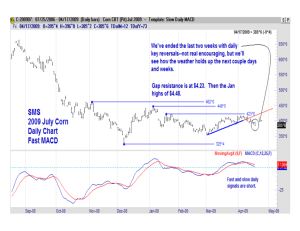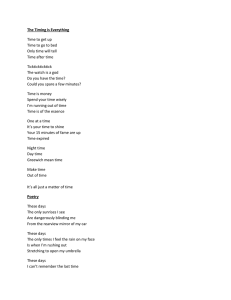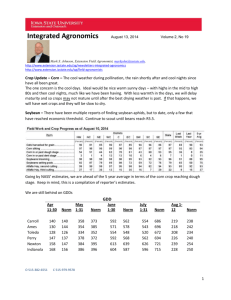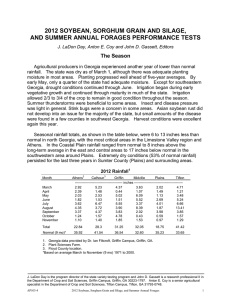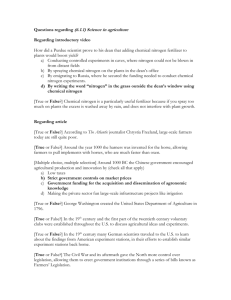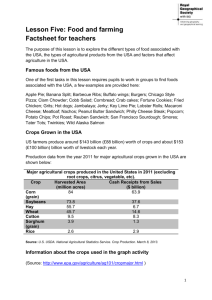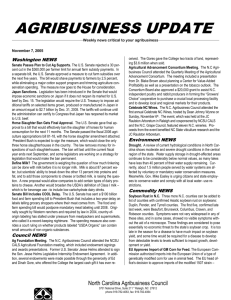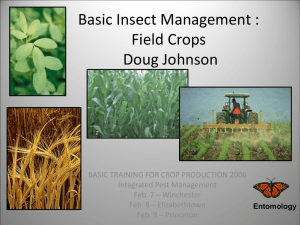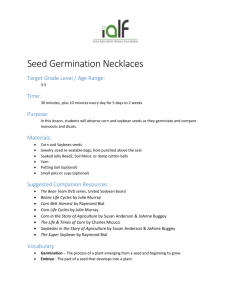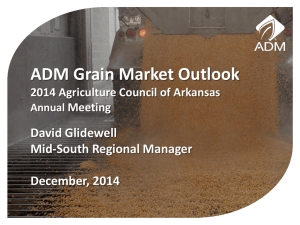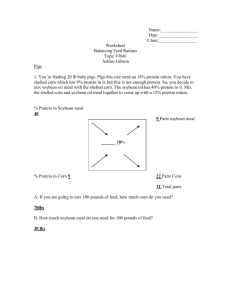here. - Mid-South Soybean Board
advertisement
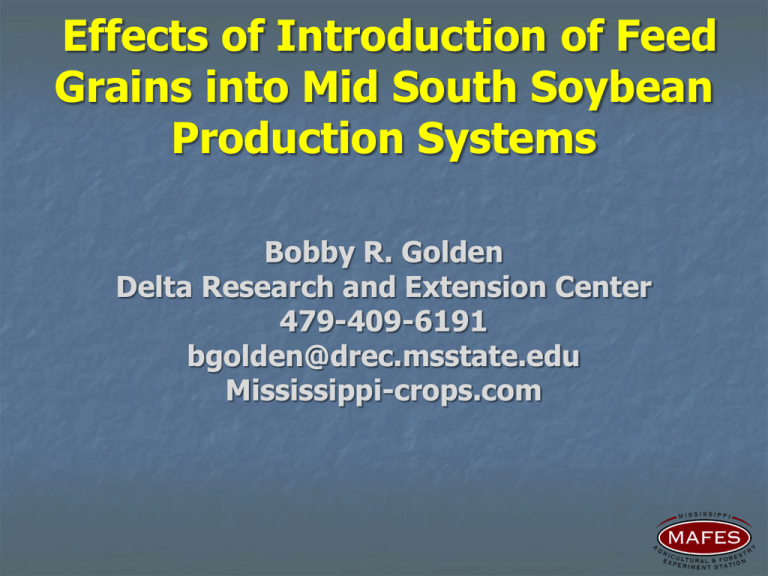
Effects of Introduction of Feed Grains into Mid South Soybean Production Systems Bobby R. Golden Delta Research and Extension Center 479-409-6191 bgolden@drec.msstate.edu Mississippi-crops.com Participants • • • • • • • • Jeremy Ross – U of A, State Soybean Specialist Josh Lofton – LSU AgCenter, Agronomist Gene Stevens – Mizzou Delta Center, Agronomist Clark Neely – TAMU, State Wheat Specialist Ronnie Schnell – TAMU, Cropping Systems Spec. Trent Irby – MSU, State Soybean Specialist Larry Falconer – MSU, Extension Economist Bobby Golden – MSU, Delta Agronomist/Soil Fertility Graduate Students • Melanie Fuhrman – U of A, Masters • Richard Turner – MSU, Masters • Potential Post Doc, or Associate yet to be filled, will be housed at the DREC at MSU – Have spoken with one potential candidate Other Cooperation • Pioneer Hybrid – Will provide the corn Hybrid (P1637), Soybean (49T97R) and Grain Sorghum (83P17) for the duration of the project. – Consultation with Pioneer Representatives suggested that varieties will be available until project termination. • Soil analysis conducted by LSU AgCenter • Nematode Analysis conducted by U of A Rational • The dramatic increase in corn acreage in the MidSouth and the resulting agronomic and economic impact of incorporating corn into Mid-South soybean production systems. • The unique problems and management issues that may result from a rotational system of soybean and grain crops, and the incorporation of wheat in a double-cropping production scheme. Why are we interested in Residue Management? • How we handle corn stubble may influence our overall soil quality. • Residue management may have a distinct effect on soil test sulfur. • Corn residue management may impact soybean yield Nutrients loss by burning • Wheat and Oat – 90% loss of N and C – 75% Loss of Sulfur – 24% Loss of phosphate – 35% Loss of Potash Heard et al., (2006) Better crops with plant food 90:3 • Corn Residue – – – – 81% 55% 11% 18% loss loss loss loss of of of of N S phosphate Potash Kruse (2011) LA Newsletter Nutrient Removal Soybean Nutrient Total Uptake Corn Removal in Harvested Portion Nutrient - - - -(lb nutr./ac)- - - - Total Uptake Removal in Harvested Portion - - - -(lb nutr./ac)- - - - N 277 188 N 235 135 P2O5 56 40 P2O5 101 66 K2O 148 74 K2O 185 40 S 35 23 S 24 10 Based on 50 bu soybean crop Based on 150 bu Corn crop Source: Osmond and Kang, 2008. www.soil.ncsu.edu/publications/Soilfacts/ag-43916W.pdf and IPNI (Nutrients removed in Harvested portion of crops) Outputs • Soil Testing – Total N&C, Mehlich-3 Extractable Nutrients, Soil pH, Nematode analysis • BMP Approach – Fertilization level based on State Recommendations. • Commodity Tracking for Economics – Determine economic optimum rotation Year 1 Update Project Planting Dates Planting Date Crop Mississippi Arkansas Texas Louisiana Missouri St. Joseph Portageville Stoneville Brooksville Pine Tree Newport College Station Corn 03-26 05-13 04-11 05-7 03-7 05-7 Soybean 04-19 05-13 05-24 05-7 03-27 05-12 Grain Sorghum 05-1 05-13 05-24 05-7 03-27 05-12 Year 1 Update - Mississippi • Two locations – Brooksville and Stoneville – Because of an overabundance of rainfall, Dryland and Irrigated treatments are showing little difference. – Plots are looking good – Not much difference in dry land vs irrigated – 2 irrigation events – Beans starting to turn, Corn ranging from 20 to 28% – Grain Sorghum is done Year 1 Update - Arkansas • Pine Tree Location • As of current the field conditions are very wet from the persistent rain events over the last few weeks. The soybeans have slight deer damage that has caused a slight stunting in a few plots. • • Newport Location: • Due to persistent wet conditions, all crops at the Newport location were seeded on May 7.All crops are being the Pine Tree Location. There is slight stunting in a replicate due to prolonged standing water. Year 1 Update - Louisiana • Due to inclement weather, all crops (soybeans, corn, and grain sorghum) were established on the same day. While not ideal, corn was planted later than the current recommended timeframe but grain sorghum and soybeans were planted within normal ranges. • The field had very intense field preparations to aid in improved water efficiency prior to this long-term trial, weed pressures have been higher than typical. • Due to this increased grass pressure in this field and surrounding fields, fields have had increased army worm pressure; however, an initial pesticide application has diminished previous populations. Year 1 Update - Texas • Until May 15, College Station had received only 40% of normal rainfall for the year. However, we received 9” of rainfall for the month of May alone, which brings us within 2.5” of normal for the year. Due to the dry conditions, plots were irrigated on April 17 (1.2”). • Soybean seed was not inoculated, but inoculated soybeans were grown the previous year in the same field and sufficient nodulation did occur. • During Mid June slight to moderate herbicide injury due to drift from neighboring plots/fields occured. Year 1 Production Issues Greater Midsouth Year 1 Production Issues – Greater MidSouth Year 1 Production Issues - Texas Four Bean Pods It Takes a Team Questions ?
